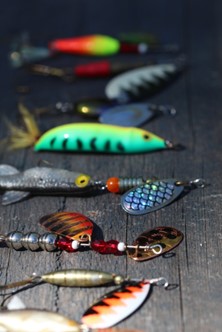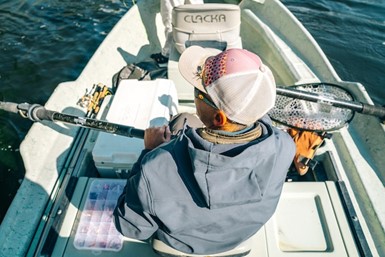In the intricate dance of the underwater world, baitfish play a crucial role as both prey and an essential part of the aquatic ecosystem. To be a successful angler, it’s vital to have a deep understanding of these smaller fish species. By gaining insights into their behavior, habitat preferences, and feeding patterns, you can significantly enhance your ability to select the right lures and techniques to attract predatory fish. Yuri Kudimov into the world of baitfish, shedding light on their habits to elevate your fishing game.
The Significance of Baitfish in the Food Chain
Baitfish, as the name implies, are small fish species that serve as a primary food source for larger predatory fish. They are prolific and reproduce rapidly, making them a vital component of the aquatic food web. Understanding the behavior and characteristics of common baitfish species is key to successful fishing.
Common Baitfish Species and Their Habits
Shiners and Minnows
Habitat: These versatile baitfish species can be found in a wide range of freshwater environments, from slow-moving rivers to lakes and ponds.
Behavior: Shiners and minnows are known for their active swimming behavior. They tend to school together, providing a tempting target for predatory fish.
Shad
Habitat: Shad are typically found in large freshwater bodies like rivers and reservoirs, often congregating in open water areas.
Behavior: They are known for their schooling behavior and are a preferred prey for many game fish species.
Menhaden
Habitat: Menhaden are primarily found in coastal waters, estuaries, and bays along the Atlantic coast of North America.
Behavior: They are filter feeders, primarily consuming plankton. Their silver coloration and active swimming behavior make them a visible target for predatory fish.
Anchovies and Sardines
Habitat: These baitfish species are common in both coastal and open ocean environments, often forming dense schools.
Behavior: Anchovies and sardines are known for their rapid, darting movements, which can attract a wide range of predators.

Habitat Preferences of Baitfish
Understanding the preferred habitats of baitfish is crucial for locating and targeting predatory fish. Here are some key considerations:
Structure and Cover: Baitfish often seek refuge around underwater structures like rocks, submerged vegetation, and fallen trees. Predatory fish will frequent these areas in pursuit of an easy meal.
Water Temperature and Oxygen Levels: Baitfish are sensitive to water temperature and oxygen levels. They tend to inhabit areas with comfortable temperature ranges and adequate oxygen supply.
Currents and Tides: Baitfish are skilled at using currents and tides to their advantage. Understanding how these factors influence their movement can help you pinpoint their location.
Feeding Patterns of Baitfish
Baitfish primarily feed on microscopic plankton, algae, and small invertebrates. They are often near the surface, where these food sources are abundant. This behavior attracts predatory fish, which in turn target baitfish as their primary food source.
Techniques for Targeting Predatory Fish with Baitfish
Matching the Hatch
Use lures that closely mimic the appearance and swimming behavior of the prevalent baitfish species in the area. This increases the chances of enticing predatory fish.
Live Bait Presentation
When using live baitfish, employ techniques like free-lining or using a slip bobber rig to present the bait naturally. This mimics the behavior of live prey.
Topwater Lures
Use topwater lures that imitate the surface activity of baitfish. Predatory fish often strike from below when they see the commotion.
Conclusion: Mastering the Art of Baitfish Understanding
To be a skilled angler, it’s essential to dive into the world of baitfish and gain a deep appreciation for their behavior and habitat preferences. This knowledge equips you with the ability to select the right lures and techniques to attract predatory fish effectively. By observing the habits of common baitfish species and applying this understanding to your fishing endeavors, you’ll greatly enhance your chances of a successful catch. So, gear up, head to the water, and let your newfound knowledge of baitfish be your guiding light in the pursuit of angling excellence. Happy fishing!
